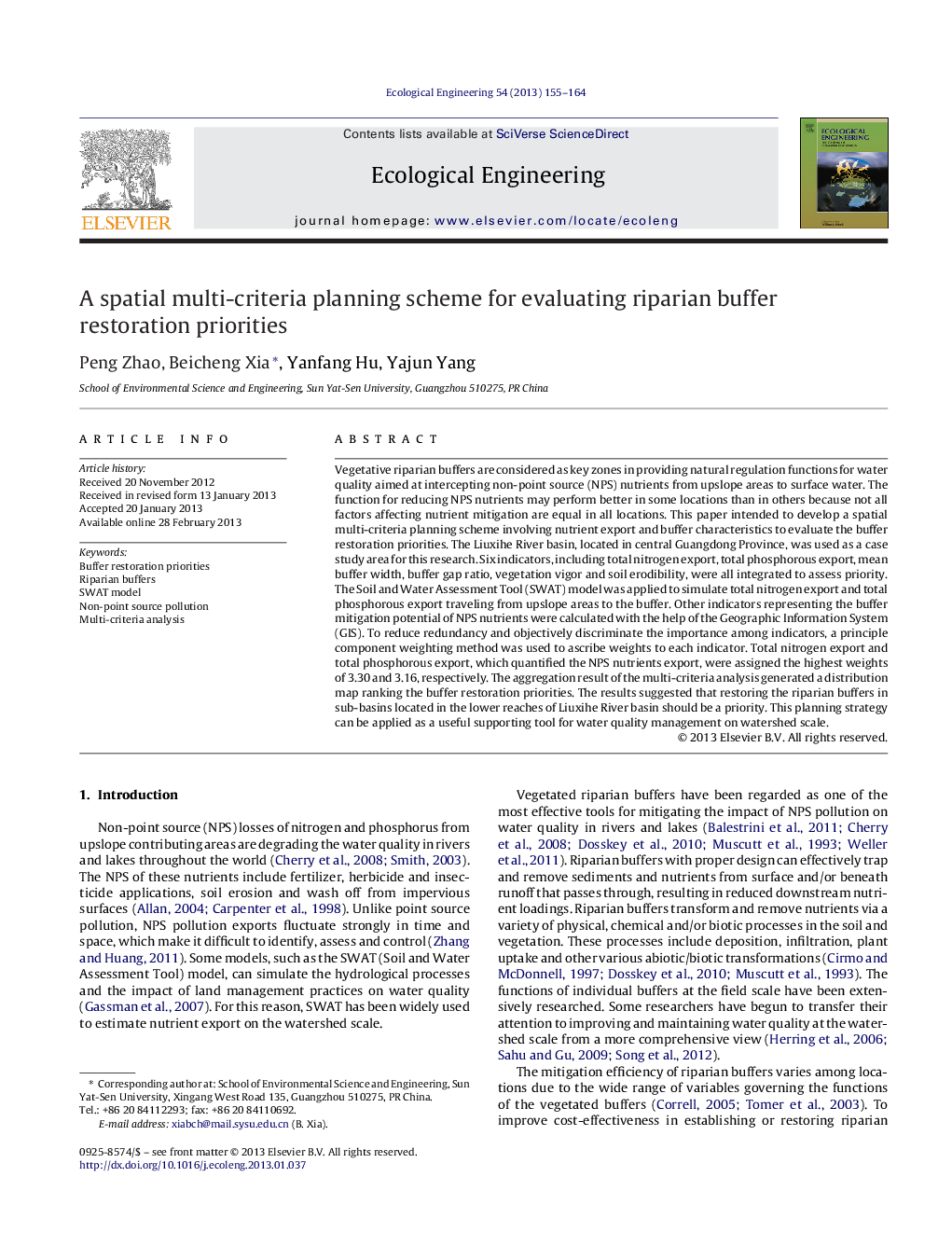| Article ID | Journal | Published Year | Pages | File Type |
|---|---|---|---|---|
| 4389804 | Ecological Engineering | 2013 | 10 Pages |
Vegetative riparian buffers are considered as key zones in providing natural regulation functions for water quality aimed at intercepting non-point source (NPS) nutrients from upslope areas to surface water. The function for reducing NPS nutrients may perform better in some locations than in others because not all factors affecting nutrient mitigation are equal in all locations. This paper intended to develop a spatial multi-criteria planning scheme involving nutrient export and buffer characteristics to evaluate the buffer restoration priorities. The Liuxihe River basin, located in central Guangdong Province, was used as a case study area for this research. Six indicators, including total nitrogen export, total phosphorous export, mean buffer width, buffer gap ratio, vegetation vigor and soil erodibility, were all integrated to assess priority. The Soil and Water Assessment Tool (SWAT) model was applied to simulate total nitrogen export and total phosphorous export traveling from upslope areas to the buffer. Other indicators representing the buffer mitigation potential of NPS nutrients were calculated with the help of the Geographic Information System (GIS). To reduce redundancy and objectively discriminate the importance among indicators, a principle component weighting method was used to ascribe weights to each indicator. Total nitrogen export and total phosphorous export, which quantified the NPS nutrients export, were assigned the highest weights of 3.30 and 3.16, respectively. The aggregation result of the multi-criteria analysis generated a distribution map ranking the buffer restoration priorities. The results suggested that restoring the riparian buffers in sub-basins located in the lower reaches of Liuxihe River basin should be a priority. This planning strategy can be applied as a useful supporting tool for water quality management on watershed scale.
► Integrated nutrients export and buffer properties to access restoration priority. ► The SWAT model was used to simulate nutrients export from upslope contributing areas. ► Using an objective weighting method to discriminate importance among indicators. ► Distribution map ranking buffer restoration priorities of the Liuxihe River basin. ► Restoring the riparian buffers in the lower reaches should be a priority.
